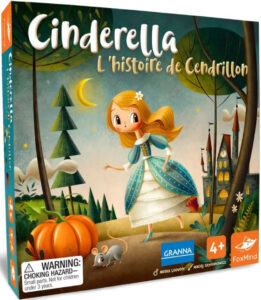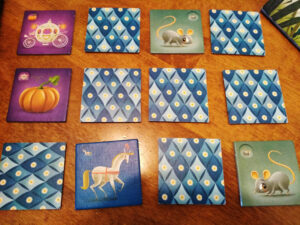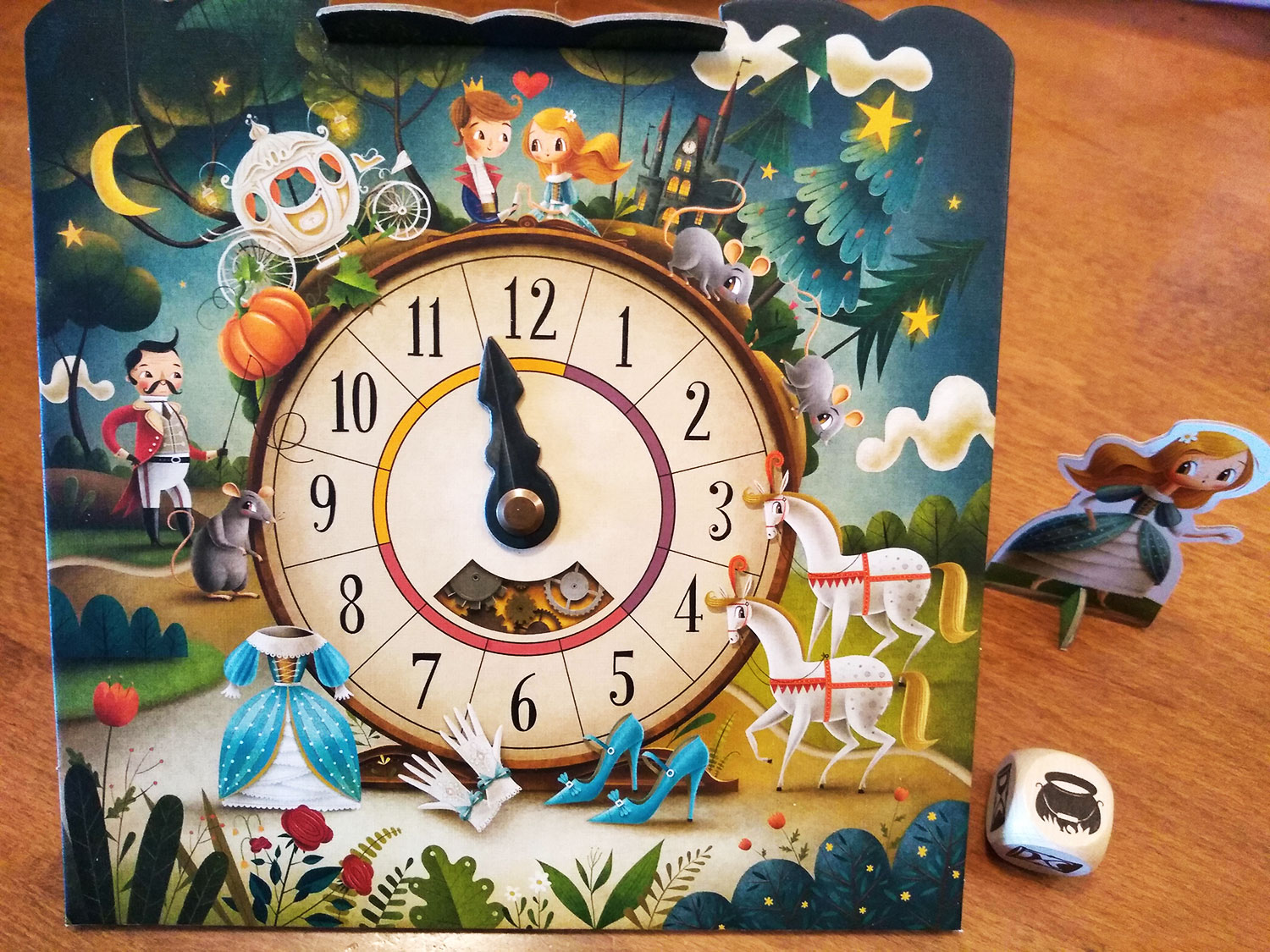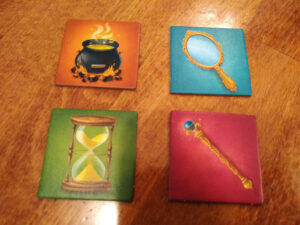 Are you looking for a good memory game for a child that brings a little more than just simply turning over cards until they hit a match? Do you have children that are into fairy tales, princesses, or timepieces? Would you like a cooperative game experience for the young ones where they can have fun without you having to pretend you forgot where that matching tile is? Well, read along and see if Cinderella is something your family might enjoy adding to game night.
Are you looking for a good memory game for a child that brings a little more than just simply turning over cards until they hit a match? Do you have children that are into fairy tales, princesses, or timepieces? Would you like a cooperative game experience for the young ones where they can have fun without you having to pretend you forgot where that matching tile is? Well, read along and see if Cinderella is something your family might enjoy adding to game night.
Cinderella is a cooperative memory game from FoxMind designed by Meelis Looveer for 1-4 players and plays in about 10-15 minutes.
Gameplay Overview:
The basic setup is that of a typical children’s memory game with a grid of facedown tiles placed on the table. These tiles depict the usual Cinderella story elements: mice, horses, slippers, pumpkin, carriage, etc. Additionally, a clock board and custom die are placed next to the tiles.
The goal of the game is to cooperatively locate the matching tile pairs so that Cinderella can reach the ball before midnight. On a turn, the player will roll the die, which determines what they are able to do with their action. If an hourglass is rolled, the player will flip over one tile and then secretly look at a second tile in the hopes that it’s a match.

Before choosing the second tile, other players can point to facedown tiles that they believe will yield a match. They may have gained this information from one of the other die faces. Rolling the cauldron allows a player to secretly peek at a single tile. A magic wand lets the player flip a tile faceup for everyone to see before returning it to the same position facedown. After searching for a matching tile pair, whether successful or not, the player must move the clock hand forward one hour. If the team finds all of the matches before 12 o’clock, the players win. But if the clock reaches midnight, everyone loses.
There is a Magic Variant of the game that can be introduced once players are ready for more of a challenge. Four special tile types can be added to the gameplay to give players more choices on their turns. Each player receives a special tile to begin the game, while several others are shuffled in with the normal game tiles. The new tiles mixed in with those on the table merely serve to slow the team’s progress toward finding matching pairs. However, the special tiles distributed to players can be used once per game for their unique abilities.
There are additional game variants in the rulebook that make minor changes such as restricting the order in which pairs can be matched or allowing everyone a final turn once the clock strikes 12. These provide for slight difficulty adjustments to accommodate the ages of the players.

Game Experience:
When playing the basic game, children will be faced with much the same challenge (or lack thereof, depending on age) that any other memory game presents. Since this isn’t competitive and older players can help out by pointing to possible matching tiles, it will be somewhat easier for younger kids. There’s a little more meat on the bones of the game with the introduction of the die that alters how a turn plays out, so it isn’t just about flipping over two tiles on your turn and nothing else.

There’s a simple element of added agency in allowing players to secretly peek at tiles, meaning that it becomes a little more interactive since some players will be the only ones to have certain information. But the game still requires players to rely on memory to apply their secret knowledge, so the core skill is still being developed.
While it doesn’t dramatically increase the depth of Cinderella, the Magic Variant does offer additional choices and variety to the core memory game. And having extraneous special tiles clutter up the pair matching gives a mild bump to the challenge for some age groups. Deciding when it’s best to use their special ability tile will give players more opportunities for decision-making. And negotiating as a group when to use special powers can help with communication skills.
Final Thoughts:
Cinderella is essentially just a memory game, so if you’ve already got several of those at home, your children will likely not find the basic game to be much different. If they happen to particularly like the story of Cinderella, then this one would obviously be a little more interesting for them. But if you are on the lookout for a memory game for children, then this one fulfills the role well while incorporating some additional options and variants to give it a little more mileage.





















